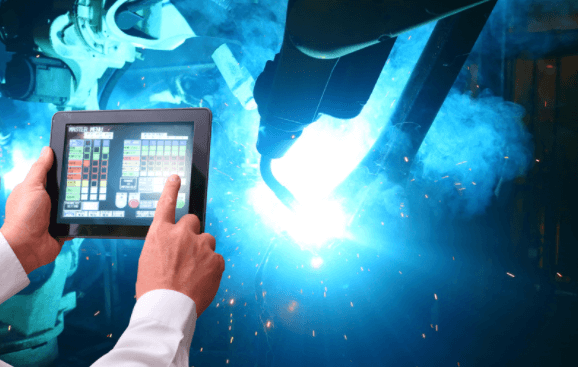As the global pandemic continues, manufacturers should look towards Industry 4.0 technology as a way to operate at optimal performance and keep its workforce safe and healthy.
Without a doubt, businesses must realign and adjust to accommodate a new era in manufacturing and production. They need to be asking serious questions now more than ever like, how they can be more efficient with the resources at hand, or how they can keep employees safe, or how to ensure that their business won’t be disrupted and can be prepared for new regulations and restrictions.
Companies are required to modify manufacturing methods and team environments. Employees are working remote, shift handover meetings have become zoom calls, and work forces have been socially distanced and provided personal protective equipment. Businesses are modifying shift patterns, so lines in close proximity to one another are staffed to run at different times. These are just a few of the modifications required of manufacturing facilities throughout the world. There’s a large amount of additional activity and strict health requirements for plants that weren’t in place six months prior.
Safeguarding workforce health is priority number-one among businesses and governments. Implementing the technology needed to keep companies of scale in check and on pace will be necessary. This is a critical time to explore operational intelligence alternatives to enhance the manufacturing environment with additional tools to support flexible labor, remote data, and connected management. Top tier organizations are implementing and deploying automation technologies—e.g. manufacturing performance platforms, autonomous materials movement, and Industrial Internet of Things (IIoT)—to accommodate variable production rates, mixed product capability, and cost savings throughout their operations.
Standards will be a struggle without the help of a cohesive, shared platform to manage and track:
- Remote work management;
- Shared dashboards between existing systems;
- Equipment communication to employees;
- Visual work instructions for flexible work force;
- Product traceability, error proofing, and rework applications; and
- Health requirements, alerts for cleaning supplies, areas to be cleaned.
It can be overwhelming to think of IIoT as an all-encompassing solution. Enterprises can get started with one machine or a line that has multiple machines. Many of our customers select one of our systems that will provide them with new functionality to solve a particular problem—perhaps a single cell or across an entire line. We enable integration with their existing manufacturing execution system or supervisory control and data acquisition package, allowing them to get their feet wet and get started with the technology. You can read more about that in one of our previous posts, How to Dip Your Toes Into Digital Transformation.
While automating your processes isn’t the only answer, it can play a major role in establishing a significantly more efficient and sustainable production model. The application of Industry 4.0 technology during this time will save jobs, it will keep your employees safe and educated. It will create new opportunities for innovation and business expansion. It’s good for the consumers, it’s good for the manufacturers, and it’s good for the workforce.







